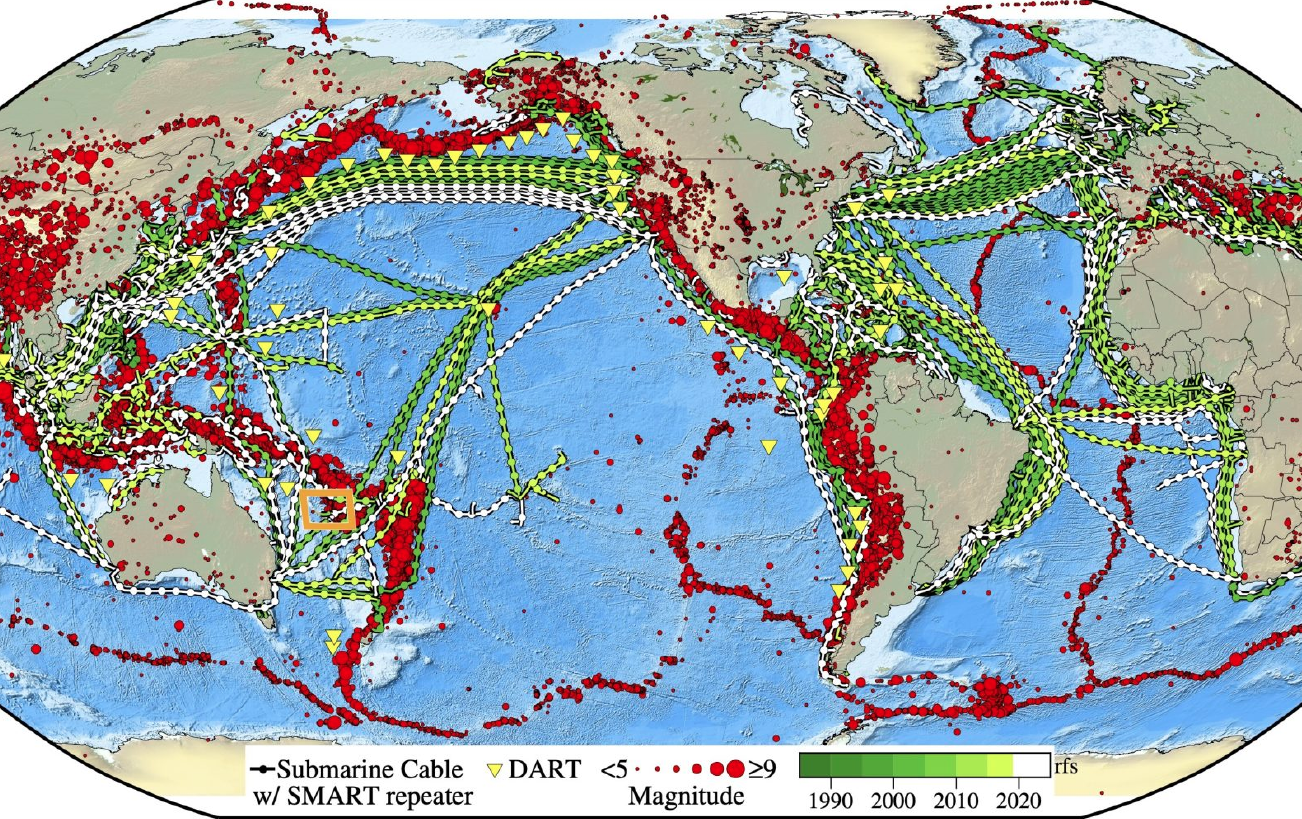A million kilometers of fiber optic cable lie on the ocean floor, carrying telecommunication signals across vast stretches of ocean to keep the whole world connected. A new international collaboration, including experts from The University of Texas at Austin, aims to turn them into a global early warning system for tsunamis and earthquakes, as well as a sensor array for monitoring unexplained temperature changes.
Researchers from the Oden Institute for Computational Engineering and Sciences and Institute for Geophysics are part of a team developing Science Monitoring and Reliable Telecommunications (SMART) Cables, which will consist of sensors that “piggyback” on the infrastructure of the existing and expanding undersea telecommunications network. The sensors will allow for low-cost global deep ocean observation to detect temperature, pressure, and seismic acceleration - the rate of change in the Earth’s natural vibrations. Data provided could inform scientists of oncoming underwater earthquakes, volcanic eruptions, and tsunamis, as well as keep track of any long-term changes in the state of the ocean.
